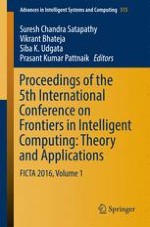2017 | OriginalPaper | Buchkapitel
PDA-CS: Profile Distance Assessment-Centric Cuckoo Search for Anomaly-Based Intrusion Detection in High-Speed Networks
verfasst von : Kanaka Raju Gariga, A. Rama Mohan Reddy, N. Sambasiva Rao
Erschienen in: Proceedings of the 5th International Conference on Frontiers in Intelligent Computing: Theory and Applications
Verlag: Springer Singapore
Aktivieren Sie unsere intelligente Suche, um passende Fachinhalte oder Patente zu finden.
Wählen Sie Textabschnitte aus um mit Künstlicher Intelligenz passenden Patente zu finden. powered by
Markieren Sie Textabschnitte, um KI-gestützt weitere passende Inhalte zu finden. powered by
